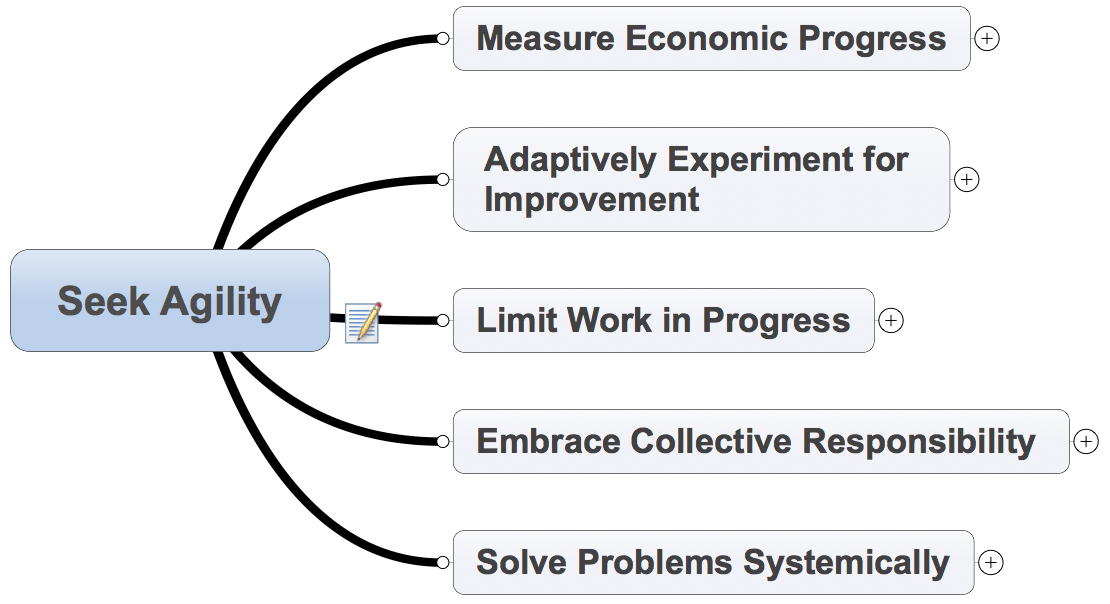Dan Greening and Jeff Sutherland will discuss Agile Leadership Patterns: The Agile Way of Doing at the Agile 2015 Conference, August 3–6, 2015. Join us and learn to answer the questions, “Am I agile?”, “Is my organization agile?” and “Are my leaders agile?” You only need to know five patterns.
If agile patterns interest you, subscribe to this blog. Over the next few months, we’ll discuss agile patterns in depth.
We welcome speaking invitations from companies and agile organizations. Feel free to contact us.
Agile Leadership Patterns:
The Agile Way of Doing
Presenter: Dan Greening, Co-Presenter: Jeff Sutherland
Track: Learning Session Type: Workshop Audience Level: Practicing
Room Setup: Rounds Duration: 75 minutes
Tentative Time: Thu 9:00am – 10:15am Tentative Room: Potomac C
Keywords: teams, Lean, Scrum, leadership, Pattern, Kanban, xp, Patterns, Enterprise Agile, individuals
Abstract
In agile, we have broad ambitions with no defining principles. We talk of agile teams, people, departments, organizations and political campaigns, as if the definition of “agile” was obvious. Yet the Agile Manifesto and its principles were written for software development teams. CEOs tell us how agile they are, because “we can move teams around on a whim” or because “we run sprints every week.” But Jeff Sutherland discovered that 80% of teams fail to ship working products frequently, they increasingly add technical debt, and many people shamble into work demoralized. Until we frame agile concepts for general application, confused leaders will marginalize our advice as the dreams of “software zealots.”
This workshop introduces five generative base patterns in the Agile Canon that seem universal or implied across specialized agile methodologies like GTD, Quantified Self, Pomodoro, Lean/Kanban, XP, Scrum and SAFe. They are Economic Progress Metrics, Adaptive Experimentation for Improvement, Work in Progress Limits, Collective Responsibility and Systemic Problem Solving. To the extent you exhibit these patterns, you demonstrate agile leadership. We’ll explore these base patterns and some interesting sub-patterns, such as Feedback Loop, Backlog, Chunking, Root Cause Mapping and Information Radiator. Agile leaders at all levels need to understand these patterns to provide effective coaching to Agile teams.
As an exercise, we will consider random questions from agile user groups, and whether these agile leadership patterns help answer the questions. We’ll brainstorm lower-level patterns, perhaps contradicting or adding to the agile base patterns. We’ll talk about some of the nuances that the agile patterns reveal. For example, did you know there are four types of learning feedback, and one common form leads to lower performance?
This will leverage recent research from psychology, education and system science.
Prerequisite Knowledge
Knowledge of at least one agile methodology.
Learning Outcomes
- Gain a clear definition of agility, which can easily differentiate agile from non-agile practices
- Make more rational life choices, preserving options and increasing likely value
- Lead teams and organizations to adapt more rapidly and effectively to changing reality
- Make better process decisions, preserving the most fundamental parts of agility, while experimenting with others
Presentation History
Dan Greening has presented at Agile 2014 (Experimenting with Bulk Estimation) and Agile 2010 (Enterprise Scrum), Scrum Gathering 2014 (Metrics Driven Enterprise Coaching), Hawaii International Conference on Systems Science (HICSS) 2015 (Enterprise Agility Metrics), HICSS 2013 (Release Duration and Enterprise Agility), HICSS 2011 (Enterprise Scrum: Scaling Scrum to the Executive Level).
Jeff Sutherland was Scrum co-creator and Agile Manifesto signatory. He has been involved in the Agile Alliance and the Agile conferences since their formation. He has made many presentations at Agile, Scrum Gathering and Hawaii International Conference on Systems Science (HICSS).
Jeff and Dan are co-chairs of the HICSS Agile/Lean track.





Leave a Reply
You must be logged in to post a comment.